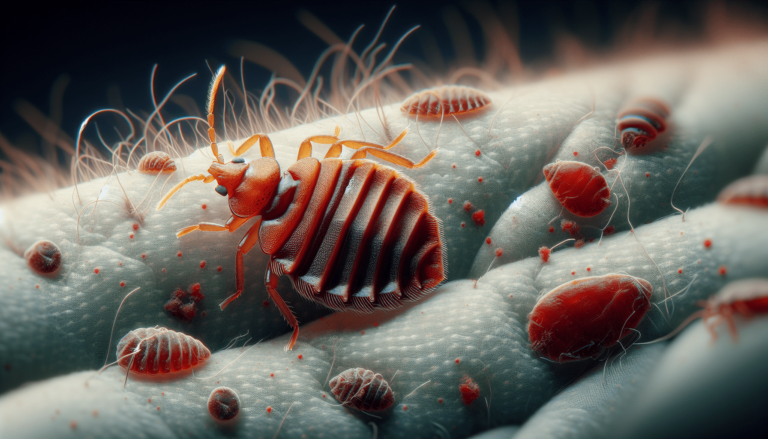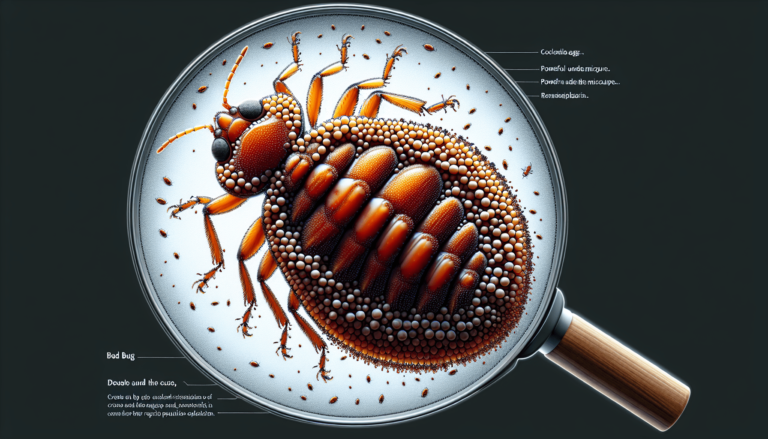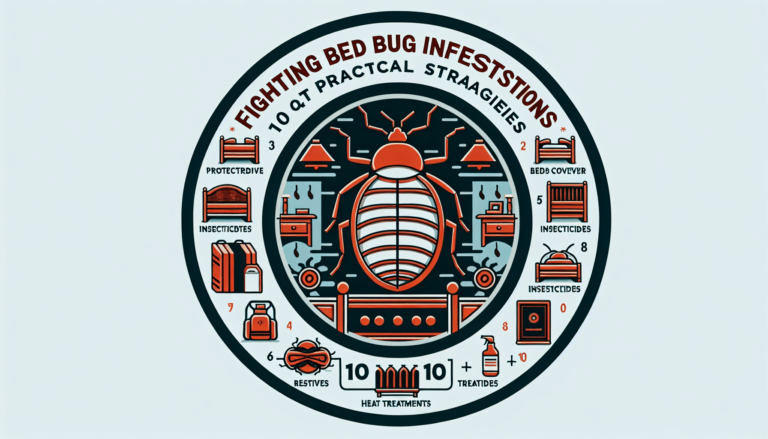How Long Does it Take for a Bed Bug Infestation to Manifest?
“How Long Does it Take for a Bed Bug Infestation to Manifest? Discovering a bed bug infestation in your home can be a distressing and unsettling experience. These tiny pests can quickly multiply and infest your living spaces, causing discomfort and even potential health risks. In this comprehensive article, written by a seasoned pest control expert with years of experience, we will delve into the timeline of bed bug infestation manifestation. From the very first signs to a full-blown infestation, we will provide you with a wealth of valuable information, including statistics, facts, expert insights, and practical tips to help you identify and address a bed bug problem. By the end of this article, you will have a thorough understanding of the timeline and steps to ensure prompt action, mitigating the spread and impact of bed bugs in your home.”
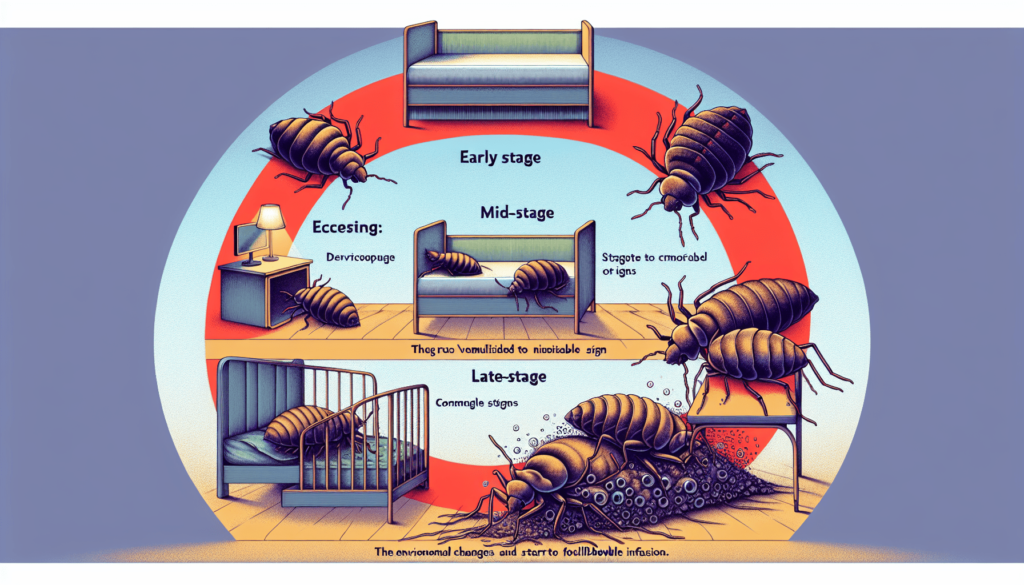
Understanding Bed Bugs
Bed bugs are small, wingless insects that feed on the blood of humans and animals. They are nocturnal pests that are typically found in beds, hence their name. However, they can also infest other areas of a home or building, such as furniture, carpets, and cracks in walls.
What are bed bugs?
Bed bugs, scientifically known as Cimex lectularius, are parasitic insects that belong to the family Cimicidae. They are oval-shaped and reddish-brown in color, and they are about the size of an apple seed. These insects are known for their ability to hide in small cracks and crevices, making them difficult to detect and eliminate.
Life cycle of bed bugs
Bed bugs go through a process called metamorphosis, which includes several life stages: egg, nymph, and adult. A female bed bug can lay hundreds of eggs in her lifetime, which are usually white in color and about the size of a pinhead. Eggs are typically laid in clusters in hidden locations, such as mattress seams or behind baseboards.
Once the eggs hatch, the nymphs emerge. Nymphs are smaller versions of adult bed bugs and go through several molts before reaching adulthood. They require a blood meal in order to molt and grow to the next stage. The time it takes for bed bugs to develop from egg to adult varies depending on factors such as temperature, availability of food, and environmental conditions.
Types of bed bugs
There are several species of bed bugs, but the most common and problematic is Cimex lectularius. This species primarily infests human dwellings and feeds on the blood of humans. However, there are other species of bed bugs that infest different types of animals, such as bats, birds, and rodents. These species do not typically infest human dwellings, but can still be a nuisance in certain situations.
Understanding the different types of bed bugs is important for effective identification and extermination methods, as each species may have slightly different behaviors and preferences when it comes to infesting and feeding.
Factors Influencing Bed Bug Infestation Manifestation
Several factors can influence the manifestation of a bed bug infestation, including environmental conditions, the availability of hosts, and the size of the bed bug population.
Environmental conditions
Bed bugs thrive in warm and humid environments, making them more common in certain regions and during certain times of the year. They can survive in a wide range of temperatures, but their optimal conditions for breeding and feeding are around 70-80 degrees Fahrenheit. Additionally, bed bugs prefer environments with relative humidity levels between 70-90%.
Availability of hosts
Bed bugs rely on blood meals to survive and reproduce. They are attracted to the carbon dioxide and warmth emitted by humans and animals, which helps them locate their hosts. If there is a regular source of human or animal blood nearby, bed bugs are more likely to establish and maintain an infestation.
Size of bed bug population
The size of the initial bed bug population can also influence the manifestation of an infestation. If only a few bed bugs are introduced into an environment, it may take longer for signs of an infestation to become apparent. However, if a larger number of bed bugs are introduced, they can reproduce more quickly and infestation symptoms may be noticeable sooner.
Initial Infestation Stages
Understanding the stages of a bed bug infestation can help in early detection and prompt action to prevent the problem from escalating.
First signs of bed bug presence
The first signs of a bed bug infestation typically include small, itchy red bites on the skin. These bites often appear in a linear or clustered pattern and are commonly found on exposed areas of the body, such as the face, neck, and arms. Other signs of bed bug presence may include small blood stains on bedding or black specks (bed bug feces) on mattresses or furniture.
Building of a colony
Once bed bugs find a suitable environment with access to a host, they begin to establish a colony. Female bed bugs will lay eggs in hidden locations near their preferred feeding areas, such as mattress seams, baseboards, or cracks in furniture. As the eggs hatch and the nymphs grow, the infestation can quickly multiply in size.
Accelerated breeding
Bed bugs have a rapid reproductive rate, especially when conditions are favorable. A female bed bug can lay up to five eggs per day and as many as 500 eggs in her lifetime. With each new generation, the infestation can grow exponentially, making it essential to address the problem as early as possible.
How Quickly Can Bedbugs Proliferate
The rate at which bed bugs can proliferate depends on various factors, including their breeding habits, population size, and environmental conditions.
Bed bug breeding habits
Bed bugs reproduce through a process called traumatic insemination, in which the male bed bug pierces the female’s abdomen with his reproductive organs. This method of reproduction can be quite traumatic for the female, but it allows for rapid breeding and population growth.
Typical rate of population growth
Under optimal conditions, bed bugs can complete their life cycle in about four to five weeks. This means that from egg to adult, bed bugs can develop and reproduce within a month. A single female bed bug can result in an infestation of hundreds or even thousands of individuals within a few months.
Variables affecting proliferation speed
Several variables can affect the speed at which bed bugs proliferate. These include factors such as temperature, humidity, availability of hosts, and the availability of suitable hiding places. Warmer temperatures and higher humidity levels can accelerate the development of bed bugs and increase their reproductive rate. Additionally, the presence of ample food sources and hiding places can support faster population growth.
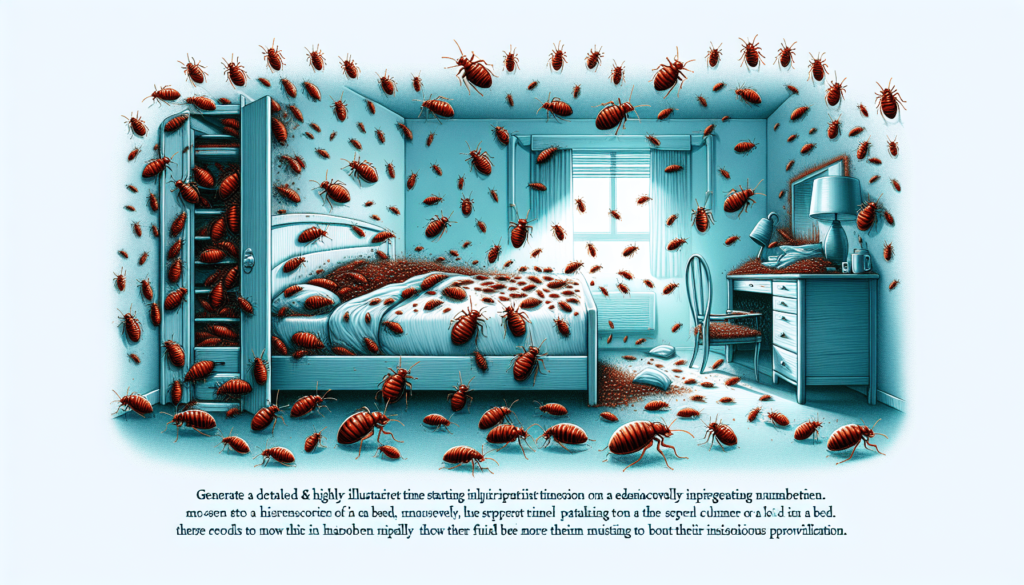
Indicators of a Mature Infestation
As a bed bug infestation progresses, certain indicators become more apparent, both in the physical environment and on the hosts themselves.
Visible signs on furniture and bedding
One of the most visible signs of a mature bed bug infestation is the presence of bed bugs or their excrement on furniture and bedding. Adult bed bugs are visible to the naked eye and can often be found hiding in cracks, crevices, or other secluded areas. Their excrement appears as small black or rust-colored spots and can be found on sheets, mattress seams, and furniture upholstery.
Physical signs on hosts
As bed bugs feed on their human or animal hosts, they inject saliva into the skin to prevent blood clotting. This can cause allergic reactions in some individuals, resulting in red, itchy welts or small bumps on the skin. These physical signs on the hosts can be an indication of a mature bed bug infestation.
Overall infestation spread
As a bed bug infestation progresses, the bugs will spread to new areas within a home or building. This can include adjacent rooms or units, as well as other pieces of furniture or personal belongings. If bed bugs are frequently found in multiple areas of a living space, it is a clear indicator of a mature infestation.
Time Required for Infestation to Become Apparent
The time required for a bed bug infestation to become apparent can vary depending on several factors.
Average time for symptoms to appear
It typically takes several weeks or even months for symptoms of a bed bug infestation to become apparent. This delay is due to the bed bug life cycle, which includes egg development, nymph development, and maturation into adults. Once a bed bug population reaches a certain size, the presence of bites and other signs become more noticeable.
Factors affecting the visibility of an infestation
Several factors can affect the speed at which a bed bug infestation becomes apparent. These include the initial size of the infestation, the level of human activity in the infested area, and the individual’s sensitivity to bed bug bites. Additionally, a lack of regular inspection or awareness of bed bugs can delay the identification of an infestation.
Health Implications of a Bed Bug Infestation
Bed bug infestations can have various health implications, both physical and mental.
Physical health risks
While bed bugs are not known to transmit diseases to humans, their bites can cause allergic reactions, skin irritation, and secondary infections from scratching. The physical discomfort and itching associated with bed bug bites can disrupt sleep and lead to emotional distress.
Mental health impacts
Living with a bed bug infestation can be extremely stressful and frustrating. The constant fear of being bitten, the loss of sleep, and the stigma associated with bed bugs can take a toll on a person’s mental health. Anxiety, depression, and insomnia are common mental health issues that can arise from dealing with a bed bug infestation.
Long-term health implications
While bed bug bites do not typically result in long-term health problems, the stress and anxiety caused by an infestation can have long-lasting effects on overall well-being. It is important to address a bed bug infestation promptly to minimize these potential health implications.
Methods to Detect Early Infestation
Early detection of a bed bug infestation is crucial for effective control and prevention. There are several methods that can be used to detect the presence of bed bugs, both on a do-it-yourself (DIY) basis and through professional inspection services.
DIY detection techniques
Do-it-yourself methods for detecting bed bugs include visual inspection of furniture, bedding, and other potential hiding spots, as well as the use of bed bug traps or monitors. These traps are designed to attract and trap bed bugs, allowing for early detection and treatment.
Professional inspection services
Professional pest control companies can provide thorough inspection services to detect bed bug infestations. These professionals are trained to identify signs of bed bugs and can use specialized tools and techniques, such as canine detection, to locate hidden infestations.
Tools for early detection
There are various tools available on the market that can aid in the early detection of bed bugs. These include mattress encasements, bed bug interception devices, and portable heat chambers for treating infested items. These tools can help prevent an infestation from spreading and allow for timely intervention.
Preventive Measures Against Bed Bug Infestations
Taking preventive measures can help reduce the risk of a bed bug infestation in your home or building. There are several practices, products, and services that can be utilized to prevent bed bugs from infesting your living space.
Household practices to prevent infestations
Regular cleaning, vacuuming, and decluttering can help eliminate hiding places for bed bugs. It is also important to inspect second-hand furniture or clothing before bringing them into your home. Taking precautions when traveling, such as inspecting hotel rooms and luggage, can also help prevent bed bug introductions.
Products designed for bed bug prevention
There are various products available that can help prevent bed bugs from infesting your home. These include mattress encasements, which create a barrier against bed bugs, as well as bed bug-proof covers for pillows and box springs. Additionally, there are bed bug repellents and sprays that can be used as a preventive measure.
Professional preventive services
Professional pest control companies offer preventive services to help minimize the risk of a bed bug infestation. These services may include regular inspections, preventive treatments, and ongoing monitoring to detect and address any potential bed bug activity.
Mitigation and Extermination Strategies for Bed Bugs
Once a bed bug infestation has been identified, it is important to take immediate action to mitigate and eliminate the problem. There are several steps and methods that can be used for effective bed bug extermination.
Initial steps to take
The first step in mitigating a bed bug infestation is to thoroughly clean and declutter the affected area. This includes vacuuming and steam cleaning furniture, mattresses, and carpets, as well as washing and drying infested bedding and clothing at high temperatures. It is also important to seal any cracks or crevices where bed bugs may be hiding.
DIY extermination methods
There are various DIY methods that can be used to eliminate bed bugs, including the use of bed bug sprays, powders, and heat treatments. It is important to carefully follow the instructions on these products and take necessary safety precautions. DIY methods may be effective for small, localized infestations, but larger infestations may require professional intervention.
Professional extermination services
Professional pest control companies have the knowledge, experience, and resources to effectively exterminate bed bug infestations. They may use a combination of treatments, such as chemical sprays, steam treatments, and heat treatments, to eliminate bed bugs at all life stages. Professional services also often include follow-up inspections and treatments to ensure complete eradication of bed bugs.
In conclusion, understanding bed bugs, their life cycle, factors influencing infestation manifestation, and methods for detection, prevention, and extermination is crucial for effectively managing these pests. By being proactive and taking necessary precautions, individuals can minimize the risk of bed bug infestations and protect their homes and well-being.


